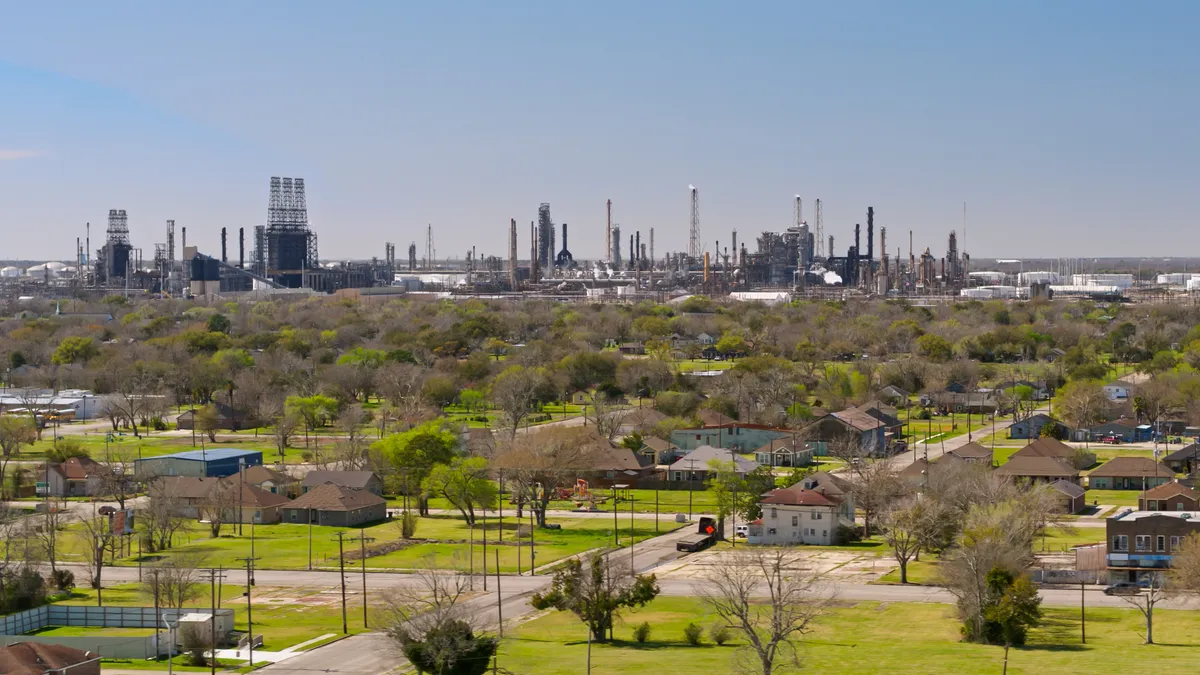The Federal Energy Regulatory Commission could bolster its reviews of energy infrastructure with deeper community engagement and a broader analysis of how those projects affect people who have historically borne the brunt of pollution and energy infrastructure, panelists said at the agency’s first-ever environmental justice roundtable this week.
“We're here because we want you to see us,” Roishetta Ozane, director and CEO of the Vessel Project of Louisiana, said during the March 29 roundtable. “We want you to feel our emotion and feel our pain.”
There are more than 12 petrochemical facilities where Ozane lives in southwest Louisiana, she said.
FERC’s growing focus on environmental justice comes amid a boom in U.S. liquefied natural gas exports, mainly from five facilities in Gulf Coast states. Five LNG export plants are under construction there and FERC has approved 10 more in the region, according to the agency. There are five project’s under review at FERC and three in the agency’s pre-application process.
Two of the LNG export projects are planned for Port Arthur, Texas, where about 30% of the residents are at or below the poverty line, according to John Beard, president and executive director of the Port Arthur Community Action Network. The city has twice the state and national average for cancer and heart, lung and kidney disease, he said.
“This is what environmental injustice looks like, by the very companies and others who share space with them that are now coming before you with permits to do more work to heap more of a disproportionate burden on communities such as mine, and others along the Gulf Coast,” Beard said.
Dana Johnson, senior director of strategy and federal policy for WE ACT, a Washington, D.C.-based advocacy group, said “it is confounding to us that these projects continue to be rubber stamped even when we acknowledge the devastating impacts to frontline, fenceline and environmental justice communities.”
Any guidance document that emerges from the roundtable needs to be used as a basis to deny permits for projects when there's specific evidence that projects will significantly harm overburdened communities, said Ben Jealous, Sierra Club executive director and former CEO of the NAACP.
“If you all start turning down projects on environmental justice considerations, the companies will start engaging communities quite early,” he said. “If there is no penalty, it’s status quo.”
FERC Acting Chairman Willie Phillips said the agency’s infrastructure reviews are governed by law and precedent, which accounts for the commission’s practice of approving almost all projects. In recent years, FERC has rejected one natural gas project, the Jordan Cove LNG export proposal in Oregon.
“Our hands are tied,” Phillips said at the end of the meeting. “That is something that we are required to do.”
Also, much of the discussion during the roundtable included issues outside FERC’s jurisdiction, according to Phillips.
Each FERC commissioner has to decide whether proposed projects are in the public interest, he said. “Environmental justice has always been and will be a part of my public interest determination,” he said. “I just want to help us create a pathway forward that everybody can respect, understand, and leads to legally durable decisions.”
Generally, engineering and economics are the main factors that determine where energy infrastructure is built, FERC Commissioner Mark Christie said.
“We want to know what's the cheapest option to get this thing built, and it may end up impacting populations differently,” he said.
Regulators, for example, might approve a project that uses an existing right-of-way “because it's cheaper than acquiring new right-of-way that's going to impact populations differently, not because they're being targeted,” he said.
Generally, economic analysis of infrastructure projects doesn’t consider external factors such as societal costs, health costs and loss of heritage, according to Matthew Tejada, deputy assistant administrator for environmental justice at the Environmental Protection Agency.
“If we start to put that math in, those [economic] equations change and that's not necessarily to say that that blows out of the water all these projects, but we need to know what the full cost impact of those projects are,” he said.
There is ample data about who's at risk and what any increase in pollution could do in communities, according to Tejada. “We can't solve those questions down to the 1,000th of the decimal point yet, but we've got plenty to start making better decisions,” he said.
Also, federal agencies need to provide funding to communities to participate in decision-making and challenge decisions, according to Tejada.
So far, FERC hasn’t changed much how it considers environmental justice in its project reviews and there’s been no change in the final decisions it makes, according to Moneen Nasmith, a senior attorney with Earthjustice.
FERC isn’t taking a meaningful look at the impacts of proposed projects, as required by the National Environmental Policy Act, or fully considering whether they are in the public interest or needed, she said Thursday in an interview.
“Public need has to mean something broader than just a gas company has a contract with another gas company,” Nasmith said. “And the balancing that they have been claiming to do under the Natural Gas Act has just been so fundamentally one-sided historically, that's why they keep approving everything, and that isn't the law, it’s just how they've been applying it.”
FERC is taking comments on environmental justice and equity in infrastructure permitting until May 15.























